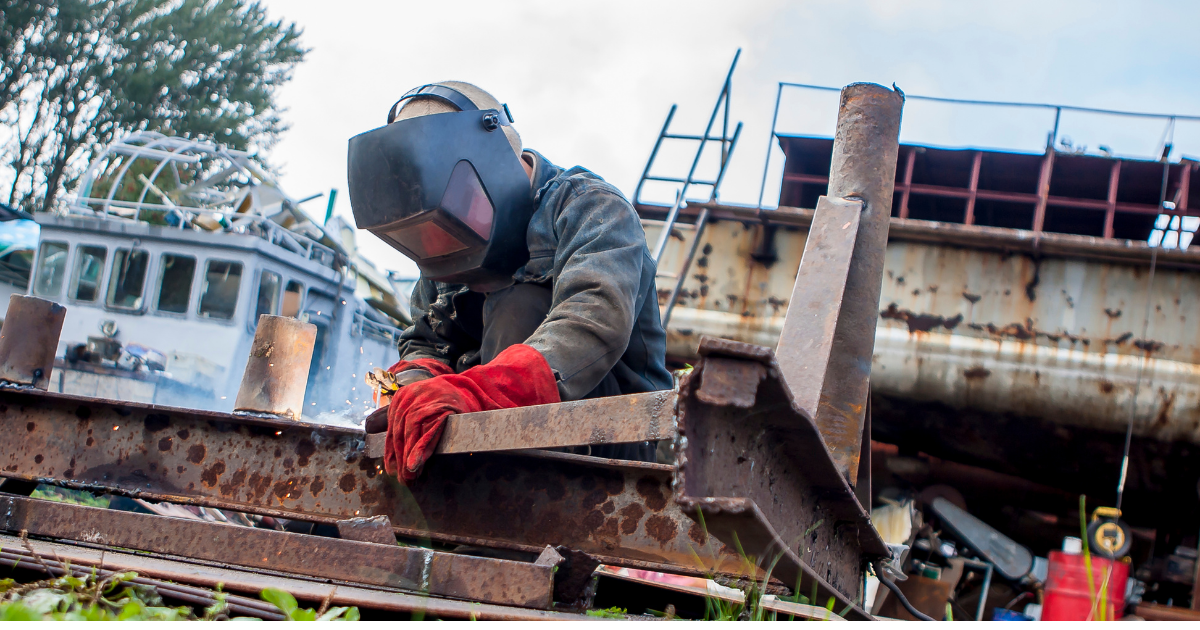Burns are very painful and could cause infections that could become potentially deadly sepsis. Many people have jobs that routinely expose them to potentially dangerous conditions that could cause serious burns. Many more have careers that only occasionally might expose them to potential burns. In all cases, workers who suffer burns and miss work as a result generally qualify for workers’ compensation protection.
If you suffer burn injuries while working, the extent of the injuries generally determines how long you might miss work. There are four levels of burns that medical doctors refer to as degrees. The worst and deadliest are third- and fourth-degree burns, but any type of burn could become infected and possibly threaten your life. The following is a closer look at potential burns that you might suffer while working.
Four Degrees of Burns
Whenever heat or chemicals damage your skin or body tissue, that is a burn. The most extreme types of burns damage all the layers of your skin and could damage the muscles. Extreme burns also could damage the other soft tissue located beneath the skin. The degrees of burns and respective extents of damage are as follows:
- First-degree burns. This burn is superficial and causes redness and pain on the outer layer of your skin. A sunburn is a good example.
- Second-degree burns. A second-degree burn affects the partial thickness of your skin’s outer epidermis and into the dermis layer beneath it while causing pain, swelling, and blistering.
- Third-degree burns. This is a full-thickness burn that goes through the entire layers of your skin while causing charred skin that might be white or black and possibly numb but usually painful.
- Fourth-degree burns. This burns through the skin and damages the fat, muscle, nerves, and possibly the bone beneath it while leaving the damaged area with no feeling.
The first two degrees of burns generally are minor and heal naturally. Burn lotion to soothe the afflicted area and a bandage can help to relieve pain. If you see a doctor, they might prescribe antibiotics to prevent infection and promote faster healing. If you suffer a minor burn while working, you might need to obtain medical treatment for superficial injuries.
How Burns Often Happen in the Workplace
Most people suffer third-degree burns while they are at work or at home. When third-degree burns occur in the workplace, they often are caused by:
- Flame or direct exposure to hot objects and scalding liquids in kitchens
- Chemical burns suffered by chemists, scientists, teachers, and medical workers
- Electrical burns suffered by electricians, cable installers, and construction workers
- Radiation exposure among medical workers and military personnel
- Friction burns suffered by carpenters and woodworkers
When third-degree burns happen in the home, cooking accidents top the list of likely causes. Other common causes of third-degree burns while you are at home could include improper storage of gasoline, exposed electrical outlets or faulty appliances, or mishaps with fireworks. Intentional burns might occur through child abuse or due to other abusive relationships.
Car accidents also are a significant cause of third-degree burns and could occur while you are on the clock and traveling for work or while running personal errands. If you are struck by a tanker truck that is hauling fuel or caustic chemicals, the potential for catastrophic and deadly exposure to fire or chemicals is relatively high.
Third-Degree Burns Require Costly Hospitalizations
Third-degree burns are much more serious and life-threatening than first- or second-degree burns. Third-degree burns always require hospitalization and skin grafts to replace the lost skin. More recent medical advancements also make it possible to use skin substitutes instead of skin grafts to treat burned areas.
The cost of treating third- and fourth-degree burns often runs into the millions of dollars per case, owing to the need for extensive medical care and repeated surgeries. All third-degree burns require immediate medical attention and usually extended hospitalization. That generally means spending and extended period in the intensive care unit with very costly medical equipment and medications as well as a team of medical professionals to deliver effective treatment.
The National Council on Compensation Insurance (NCCI) says the initial hospitalization to treat catastrophic burn injuries greatly increases costs to provide medical care for workers who suffer third-degree burns on the job. The NCCI says average cost greatly exceeds the amount of premiums paid by job providers to provide workers’ compensation coverage for workers who suffer third-degree burn injuries.
Virtually all victims of third-degree burns undergo several skin grafts and possible cosmetic surgery to help to restore the burn victim to his or her best possible health. Many doctors also prescribe an aggressive use of antibiotics and delivery of vital intravenous fluids to stave off infection and to keep the skin and burned areas hydrated.
Potential Complications from Third-Degree Burns
The severity of third-degree burns ensures you could suffer from a variety of potential side effects, some of which could become life-threatening. Sepsis, which is caused by infection, could set in and release potentially deadly bacteria into your bloodstream. Tetanus also could enable bacteria to enter your body through the burn wound and cause serious complications.
If you suffer a dangerous reduction in bodily fluids, including blood, hypovolemia could make the healing process much more difficult. Even hypothermia is a potential problem if your body temperature drops due to the effects of the burned skin tissue and your body’s reaction. Nearby hot air or smoke also could make breathing more difficult, and scar tissue could affect the bones and joints.
Although third-degree burns have many potential complications, a return to work often is the outcome. However, if you suffer fourth-degree burns, your working career could be over. If so, you likely could qualify for early disability benefits through Social Security in addition to obtaining workers’ compensation benefits.
Improved Survival Rates for Catastrophic Burns
Several decades ago, third-degree burns on a relatively small part of your body posed a serious threat to your ability to survive your burn injuries. During the 1940s, third-degree burns on about a third of your body meant you had about a 50 percent chance of survival. Today, you would need to suffer third-degree burns on about 80 percent of your body to run that same level of risk.
The creation of specialized burn centers that are located throughout the United States and their growth in numbers help to improve your chances of surviving extensive third-degree burns. Those burn centers are staffed by medical experts and medical researchers who develop and apply the most advanced treatment for catastrophic burn injuries.
Medical advancements steadily improved survivability, and burn injuries now rarely result in workplace fatalities. Survival rates among older burn victims also are improving, and most workers who suffer third-degree burn injuries usually wind up back on the job. However, a lot of costly work goes into producing those excellent results.
Insurers who underwrite workers’ compensation insurance struggle to meet the costs of treatment and other significant losses that you might suffer. That might make it necessary to obtain representation from a lawyer who is experienced in workers’ compensation claims arising from burn injuries.
Cherry Hill Workers’ Compensation Lawyers at Pietras Saracino Smith & Meeks, LLP, Help Workers Sustaining Burns on the Job
Third-degree burns are very dangerous and could cause you to miss work for a long period while undergoing extensive medical treatment. If you suffered burn injuries while working, reach out to the Cherry Hill workers’ compensation lawyers at Pietras Saracino Smith & Meeks, LLP. Our experienced legal team can help you to present the strongest claims for benefits. Call us today at 856-761-3773 or contact us online to schedule a free consultation. Located in Cherry Hill, New Jersey, we serve clients in Camden, Cinnaminson, Delran, Maple Shade, Pennsauken, and throughout South Jersey.







